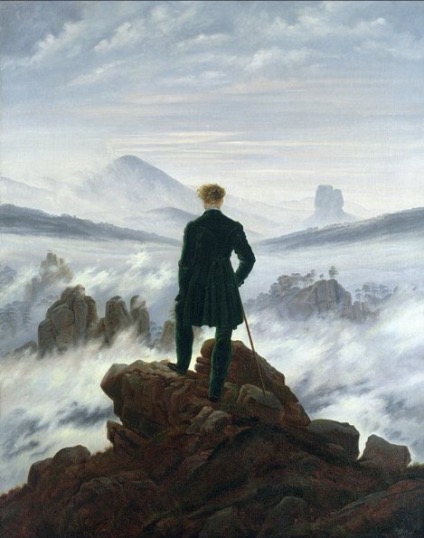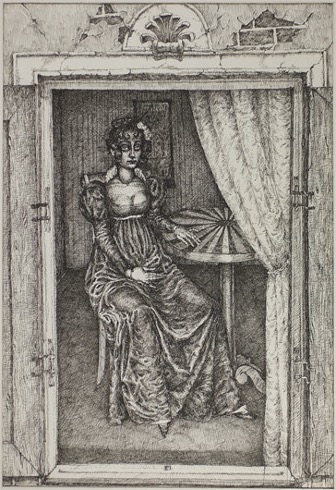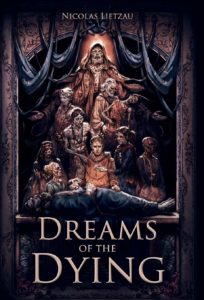
“Der Nachtmahr” by Henry Fuseli, 1790/1791. Rooted in Norse mythology but tenacious in European folklore, nachtmahre are creatures that possess people as they sleep, causing anxiety, panic, and bad dreams. The term is the etymological root of the English word “nightmare.” Otherworldly beings attacking a person’s sanity and testing their faith are an archetypal motif of Dark Romanticism.
From song titles to BDSM dating apps to erotica with sexy and unsafe billionaires waiting to be tamed,it is sheltered to say the term “dark romance” has changed meaning since its inception. In fact, few literary movements are probably as ambiguous, concealed, and even misunderstood as Dark Romanticism, Romanticism’s black mirror. It is curious, especially considering how influential it once was and how universal its telltale themes and motifs still are in Gothic and horror literature today. This essay attempts to demystify Dark Romanticism, shed some airy on its roots and its influence on literature, and hopefully, illustrate why it remains one of the most fascinating literary movements to this day.
It is challenging to define a starting and ending point of Dark Romanticism, but it is generally agreed upon that it began in the second half of the 18th century, with English works such as Horace Walpole’s The Castle of Otranto (1764) or William Beckford’s Vathek (1786), peaked across Europe in the early 1800s, and faded with German writer Eichendorff’s death in 1854. Even though the first Dark Romantic works were by English writers, it is challenging to confine it to a specific country. With the early 1800s being an age of relative peace, the upper class’s travel and cultural exchange was common and allowed Romanticism and Dark Romanticism to disseminate across most of Europe and America.
To understand what defines Dark Romanticism, it is helpful to look at Romanticism more broadly and the era that preceded it, the Age of Enlightenment, the philosophical and intellectual movement that dominated most of the 17th and the mid-18th century. In an unprecedented wave of clarity, it swept across Europe, spreading values such as rationality, secularism, and the evidence of the senses, the idea that the perceptible should be the lodestar of thinking. Significant scientific advances followed, with inventions such as the steam engine laying the foundation for the Industrial Revolution; it was an era that put reason first and foremost and can be considered the basis of state-of-the-art liberalism.
 “Der Wanderer über dem Nebelmeer“ (The Wanderer Above the Sea of Fog, 1818) by German Romantic painter Caspar David Friedrich is among the most renowned paintings of the era. It encapsulates many Romantic ideals: solitude, the beauty of nature, and the quest for transcendence.
“Der Wanderer über dem Nebelmeer“ (The Wanderer Above the Sea of Fog, 1818) by German Romantic painter Caspar David Friedrich is among the most renowned paintings of the era. It encapsulates many Romantic ideals: solitude, the beauty of nature, and the quest for transcendence.
There are dozens of Dark Romantic motifs, but according to Vieregge, the most emblematic are the unexplained supernatural, the horror in technology, and the supernatural as a trial of character.
The horror in technology is self-explanatory. As fascinating as the Enlightenment’s many technological developments were, their implications were equally daunting. Mary Shelley’s Frankenstein (1818), where scientist Viktor Frankenstein builds a creature in his laboratory that develops consciousness, is the archetypal example of this confrontation with technology’s ethical implications. Shelley expertly uses the supernatural to explore the boundaries of science, the godlike powers it bestows upon humanity, and what it means to be human. Another excellent example of this motif is E.T.A. Hoffmann’s Der Sandmann (The Sandman, 1816), where a man falls in love with a woman named Olimpia, who turns out to be an automaton. If something seems and acts human, is it human? It is a fascinating exploration of scientific ethics.
 Olimpia from E.T.A. Hoffmann’s “Der Sandmann” (1816). Like Edgar Allen Poe in English literature, Hoffmann is considered the seminal German Dark
Olimpia from E.T.A. Hoffmann’s “Der Sandmann” (1816). Like Edgar Allen Poe in English literature, Hoffmann is considered the seminal German Dark
“No, I don’t believe in ghosts. But I fear them.”
***


